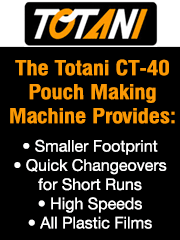EPA Wins Big Victory on Particulate Matter and Ozone
- Published: May 01, 2002, By Sheila A. Millar, Attorney-at-Law, Keller & Heckman, Washington DC
On March 26, 2002, the US Court of Appeals for the District of Columbia handed EPA a resounding victory in its battle to promulgate revised national ambient air quality standards (NAAQS) for ozone and particulate matter (PM) under the Clean Air Act.
The NAAQS, which EPA must review every five years, establish ambient air concentration limits for six so-called "criteria" air pollutants designed to protect public health and welfare.
All air quality control regions within a state must attain the NAAQS for each pollutant, or else be designated in nonattainment for that pollutant. American Trucking Association Inc. v. EPA, No. 97-141 (DC Cir. Mar. 26, 2002) removes the last legal obstacle to promulgation of stricter ozone and PM NAAQS and shifts the debate to implementation of the standards.
Converting industry facilities in any area designated in nonattainment with the new NAAQS may be subject to increased air emission controls and reporting requirements, but more importantly, the principles involved will be applied in judging appropriateness of future EPA decisions.
Applying a highly derential standard of review, the court relied heavily on EPA's "exhaustive" rule-making record to reject claims by small businesses, industry associations, and state attorneys general that EPA acted arbitrarily and capricioiusly in setting daily and annual average PM levels more stringent than required to protect public health adequately.
The court held EPA's inability to guarantee the accuracy or increase the precision in setting NAAQS in no way invalidated the standard.
Although the Clean Air Act required EPA to describe qualitatively the selection criteria for a particular NAAQS, legal precedent expressly rejects the notion the Agency must completely understand every risk posed by pollutants every time it establishes a NAAQS.
The court also gave short shrift to competing claims by environmental groups that the daily particulate matter limits were too lenient, deferring to EPA's expert judgment in determining the extent of incremental risk that needed to be addressed.
The American Trucking Assn. also challenged the ozone standards on the grounds EPA had failed to identify or apply any legal standard in setting the NAAQS. Harkening back to its discussion on particulate matter, the court affirmed EPA's precautionary approach.
The court stressed EPA has no obligation either to identify an accurate "safe level" of a pollutant or to quantify precisely its risks before setting the primary NAAQS. Rather, EPA must err on the side of caution, to set the NAAQS at whatever level it deems necessary and sufficient to protect the public health with an adequate margin of safety.
Now the legal wrangling is over temporarily, EPA faces the dauting task of implementing the new NAAQS. Some data indicates more than 600 counties across the US likely are to violate the new ozone NAAQS, while 300 or so counties likely will exceed the PM limits.
States with "nonattainment" areas must prepare and submit EPA a State Implementation Plan (SIP) detailing the means by which these areas will be brought into attainment, such as requiring that new and modifed sources demonstrate through their construction permits they will not exceed emission limits, or offsetting emissions from new and modified sources with emissions reductions in existing sources. For existing converting facilities, these requirements could restrict future increases in production or operating periods, and the impact will be felt in other rule-making actions as well.
Sheila A. Millar, a partner with Keller and Heckman LLP, counsels both corporate and association clients. Contact her at 202/434-4143; millar@khlaw.com; PackagingLaw.com













